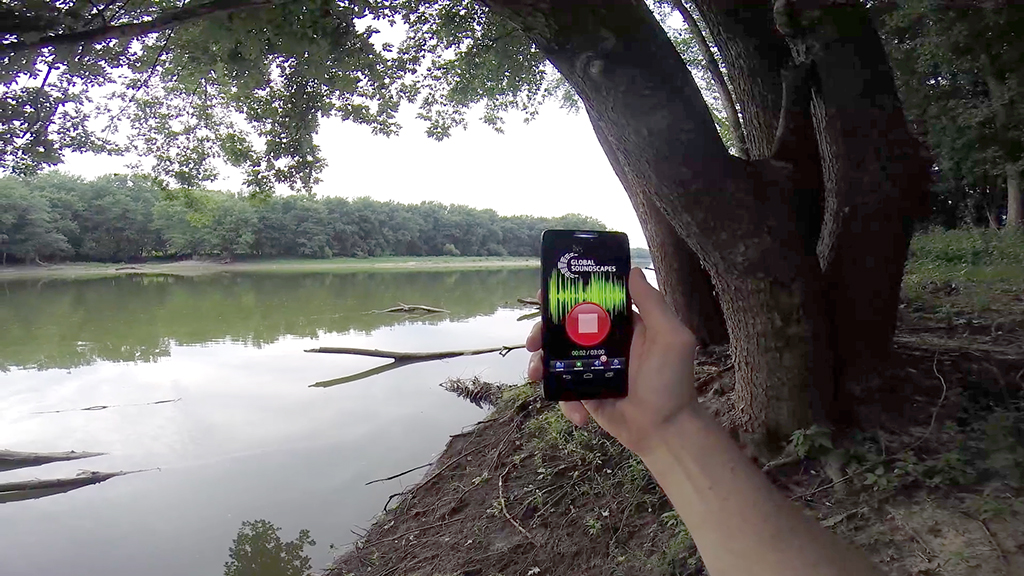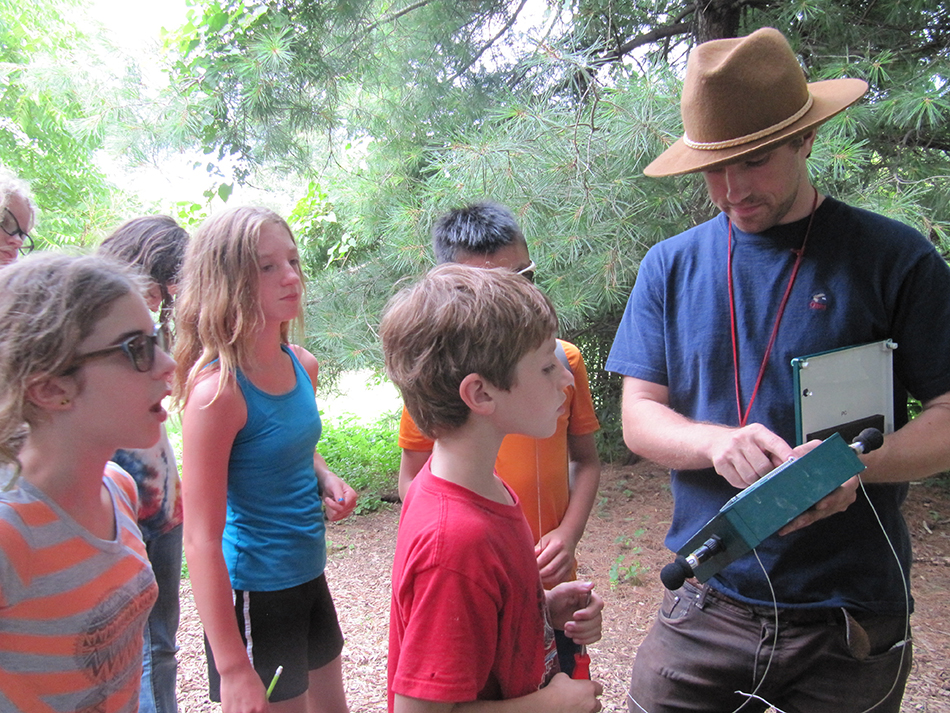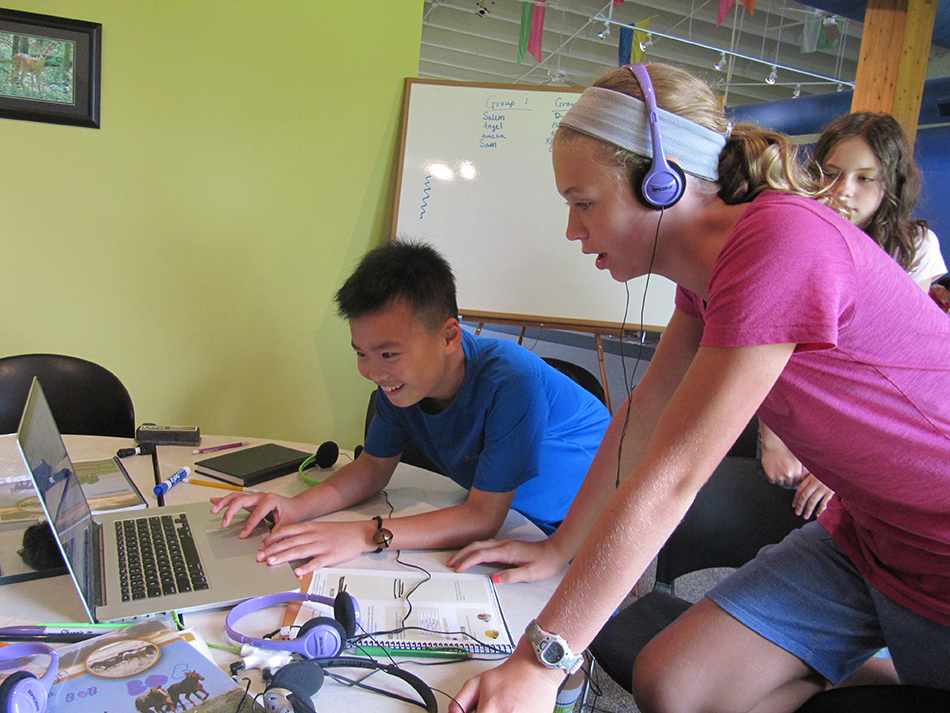Brief
Understanding Nature Through Active Listening
Connected Science Learning October-December 2018 (Volume 1, Issue 8)
By Bryan Pijanowski, and Maryam Ghadiri

Sounds are all around us and are useful sources of information for scientists. Unfortunately, we are living in an earbud society in which many youth and adults have “turned off their ears” and go through their daily lives not noticing the wonderful sounds occurring around them. A comprehensive, environmentally oriented STEM education project called “Global Soundscapes: Big Data, Giant Screens, and Open Ears!” recently completed several important milestones to establish an acoustic link back to nature and introduce a new, exciting STEM (science, technology, engineering, and math) field called soundscape ecology. Soundscape ecology is an emerging field that studies how soundscapes—the combination of all sounds occurring at a given place and time—can reflect ecological patterns and processes at various temporal and spatial scales. Through the lens of sound, we can assess biodiversity levels and ecosystem change all over the world, because a healthy habitat sounds different from one that is degraded. Funded by the National Science Foundation’s Advancing Informal STEM Learning program, the main goal of the Purdue University–led project has been to educate middle school–aged youth, high school students with visual impairment, and adults about soundscape ecology through four different informal learning components. Educational goals include raising awareness about one’s own acoustic surroundings and how a new STEM field is addressing challenging environmental problems through the lens of sound. The four components are:

- The interactive IMAX movie The Global Soundscapes! A Mission to Record the Earth, which premiered in late 2016 in 10 science theaters across North America. It introduces the field of soundscape ecology to school groups and museum visitors while a trained science educator, who plays the role of a field ecologist, engages with the audience. The movie transports viewers to different ecosystems by immersing them in the soundscapes of the wild jungles of Costa Rica, Hawaiian coral reefs, and the expansive grasslands of Mongolia.
- An online, directed-discovery MOOC (massive open online course) called iListen.org, which presents youth with learning activities allowing them to conduct virtual experiments with acoustic data used by scientists in the interactive movie.
- A weeklong summer camp, called Your Ecosystem Listening Labs (YELLs), is an inquiry-based, immersive learning experience developed for science museums and local summer camps.
- A citizen science–based recording app called Record the Earth allows everyone with a cell phone or tablet to record their own soundscapes, archive them, and upload recordings to an online map used by Purdue scientists. Users can also analyze associated social science data, such as displaying places in the world where “soundscapes make people happy.”

During formative and summative evaluations of the interactive movie and YELLs, we found that participants learned the following core ideas:
- Movie and YELL audiences comprehended the scientific terminology introduced to them.
- Participants could connect how ecologists use sound as a data source to address a variety of environmental problems.
- They understood the high-level scientific discovery process—namely, how digital data were being collected, analyzed, and interpreted in the context of environmental research questions.
- The immersive experiences and active listening increased their awareness of sound around them, which also improved their appreciation of nature.
- Observing scientists and using authentic technologies, such as recording devices and software that ecologists employ to study nature through sound, increased participants’ interest in STEM fields.

For more information, readers can go to www.globalsoundscapes.com.
Bryan Pijanowski (bpijanow@purdue.edu) is director of the Center for Global Soundscapes and professor in the Department of Forestry and Natural Resources at Purdue University in West Lafayette, Indiana. Maryam Ghadiri (ghadiry85@gmail.com) is a postdoctoral researcher at the Center for Community and Citizen Science at University of California, Davis, in Davis, California.


